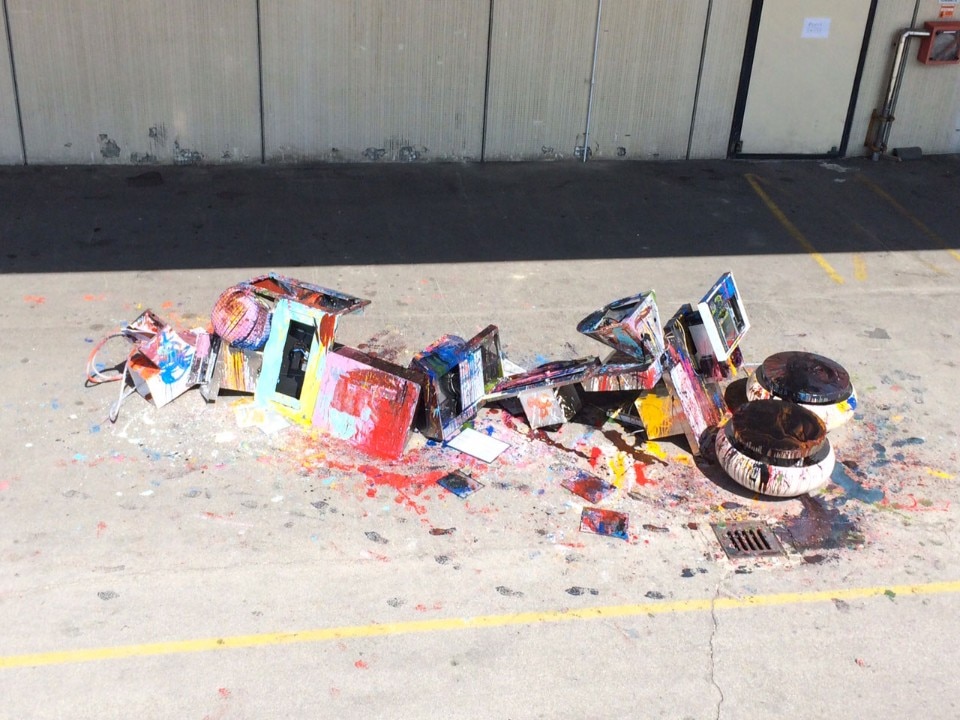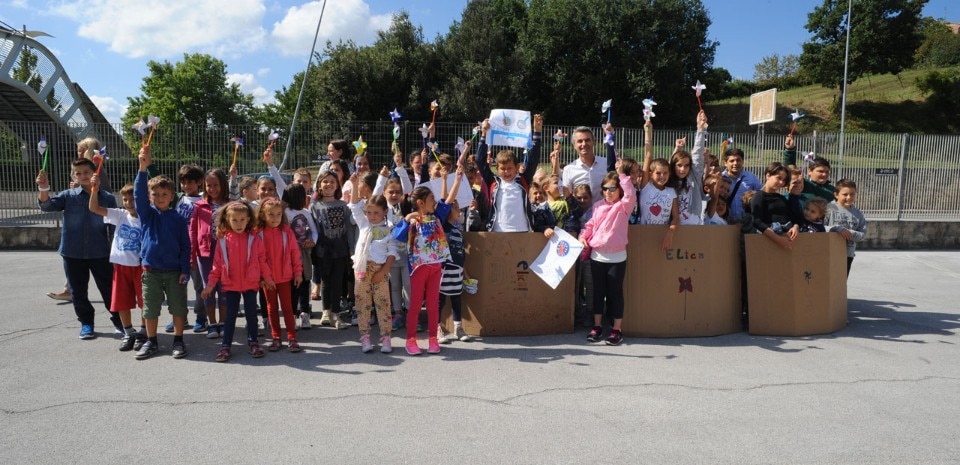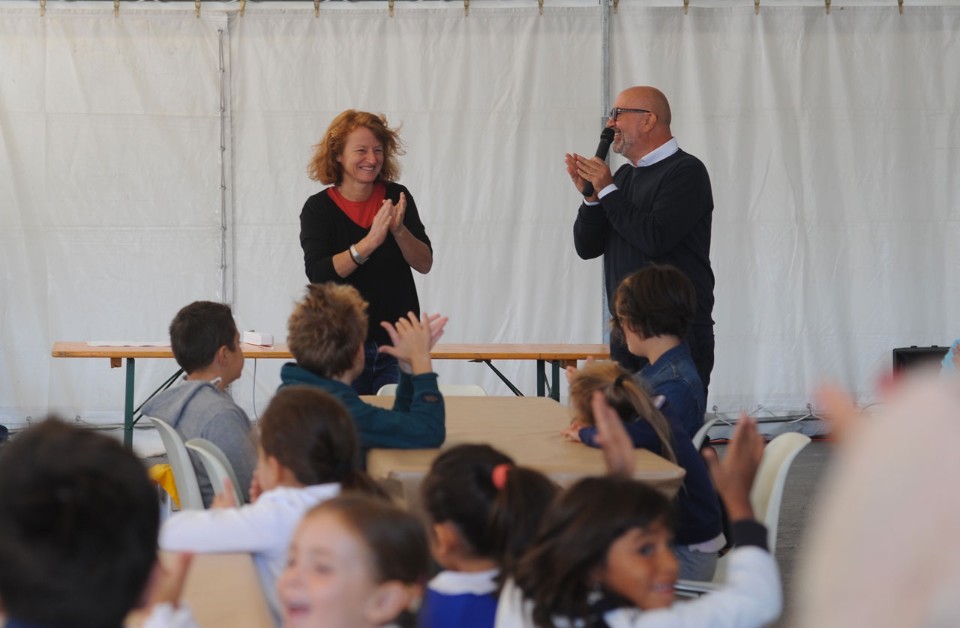
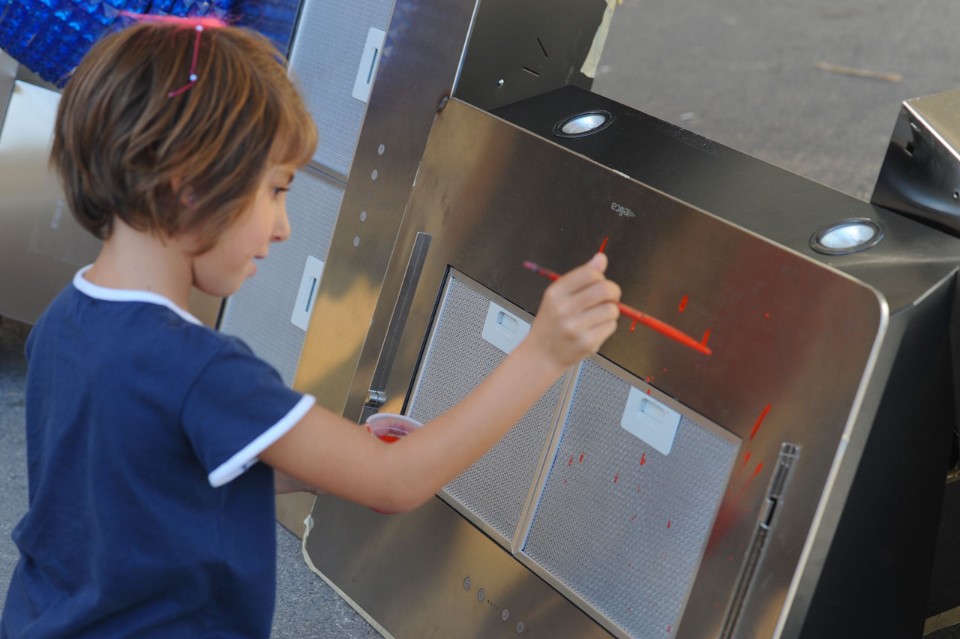
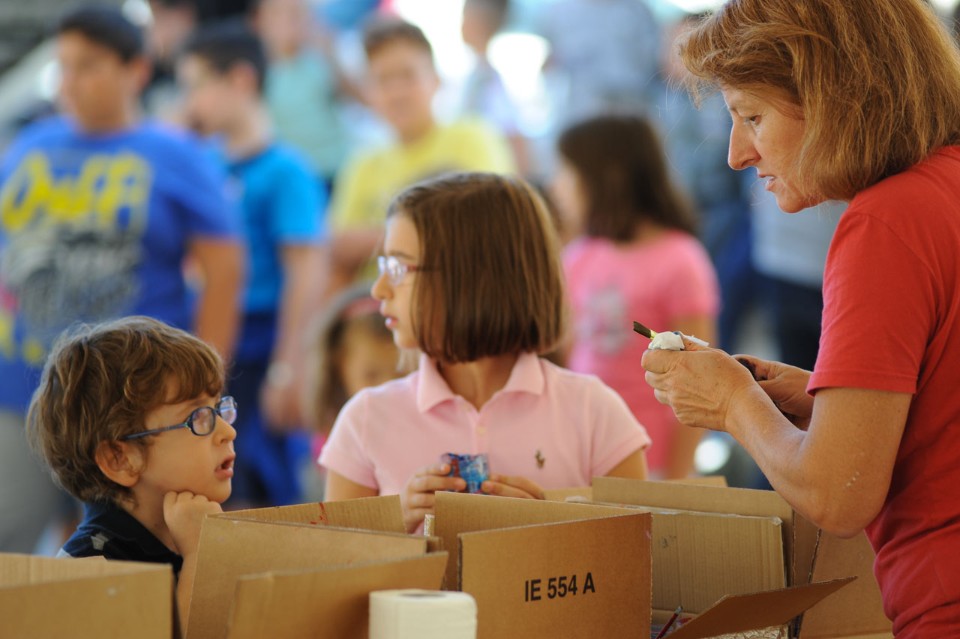
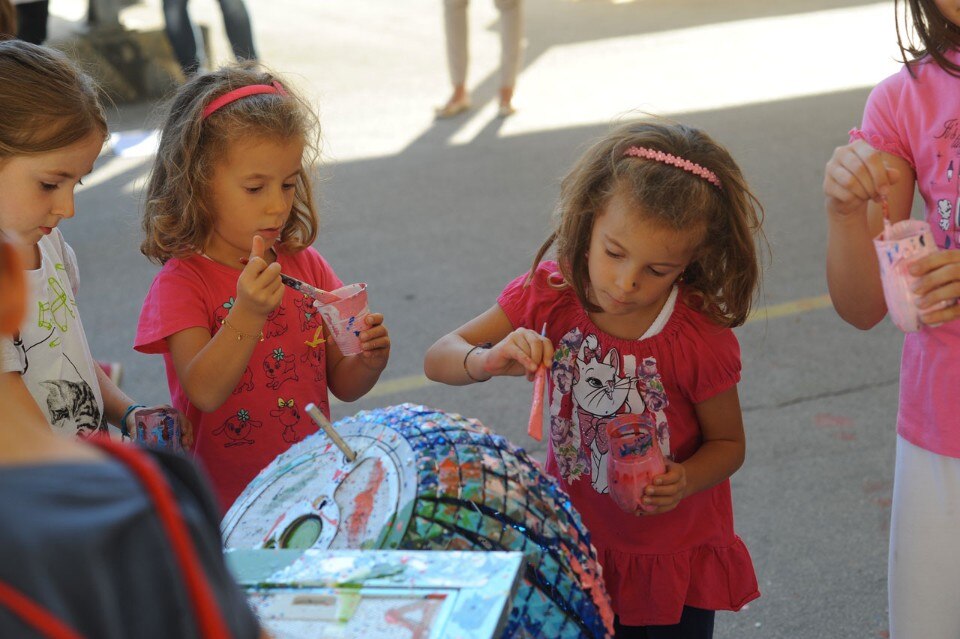
The end result was a mix of previous educational-theoretical experience and an attempt to reproduce existing hoods although the desire to play, have fun, experiment and surprise prevailed, with these everyday objects being seen from a different angle, as children always do.
In this particular case, they produced completely new designs, totally the fruit of their imaginations, in a process that might be described as the desemanticization of the real object. Only one of the drawing compositions produced and displayed during the day was actually chosen for construction, by assembling the components as imagined by the children. The artist Elisabetta Benassi was responsible for the concrete and faithful construction of this new “prototype” – hence the title of the day.
The greatest enthusiasm was seen in the afternoon when the young artists were left free to colour the creation that had taken shape.
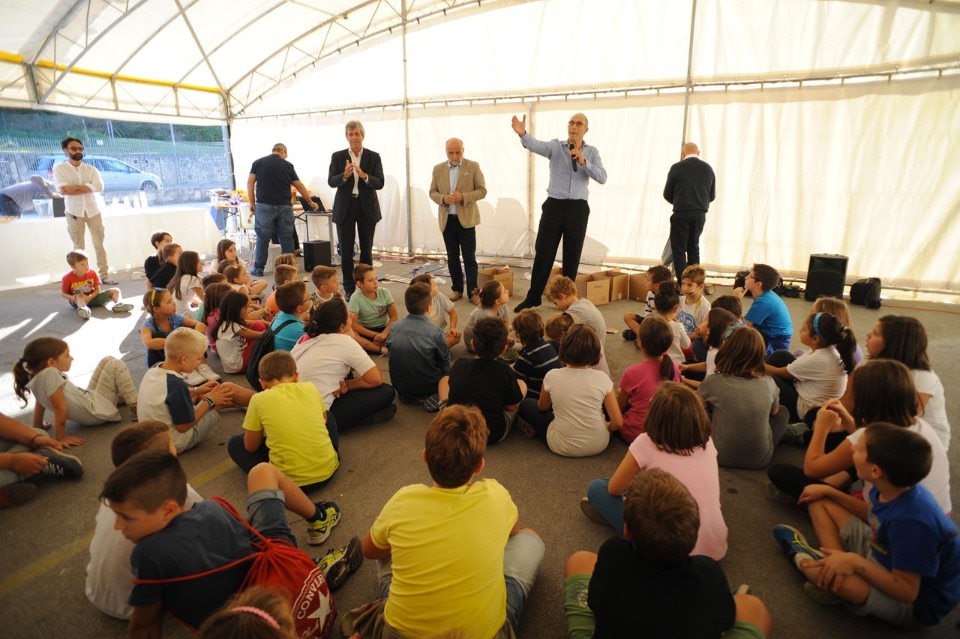
The Elica Group’s President, Francesco Casoli, son of Ermanno Casoli after whom the Foundation is named, and Elisabetta Benassi, the protagonist of the day along with the children, appeared hugely enthusiastic and happy with the success of the initiative.
After supervising the children’s every move, the artist said: “I’ve never had an experience like it; it’s wonderful, an exhilarating sense of joy and freedom. I have never wanted to teach. I did some supply teaching just after graduating from university and got no pleasure from my role behind the desk but I have always enjoyed exchanges, trying to give and communicate my work. Today was a very special experience.
I’m sure the children will carry today with them. They won’t realise right away, they are just amused and happy but later on, at some time in their lives, they will remember what they did today and I’m certain it will be of use to them.”
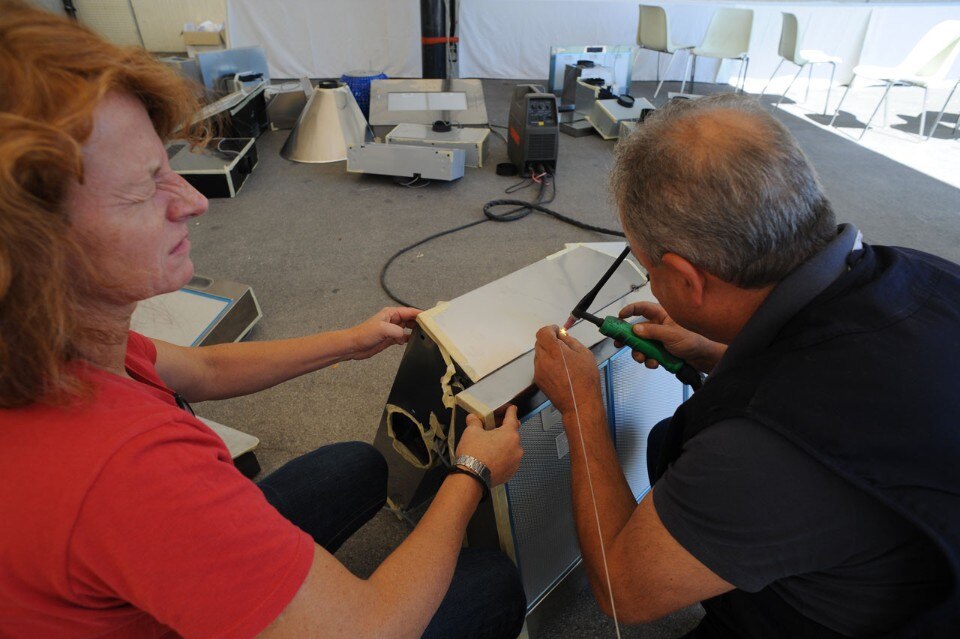
Casoli reiterated the need to continue with this and many more projects by the Foundation.
The most striking images of the day include the strange composition assembled by Benassi and the many plastic beakers used to hold paint but left empty, soiled with paint and scattered all around.
